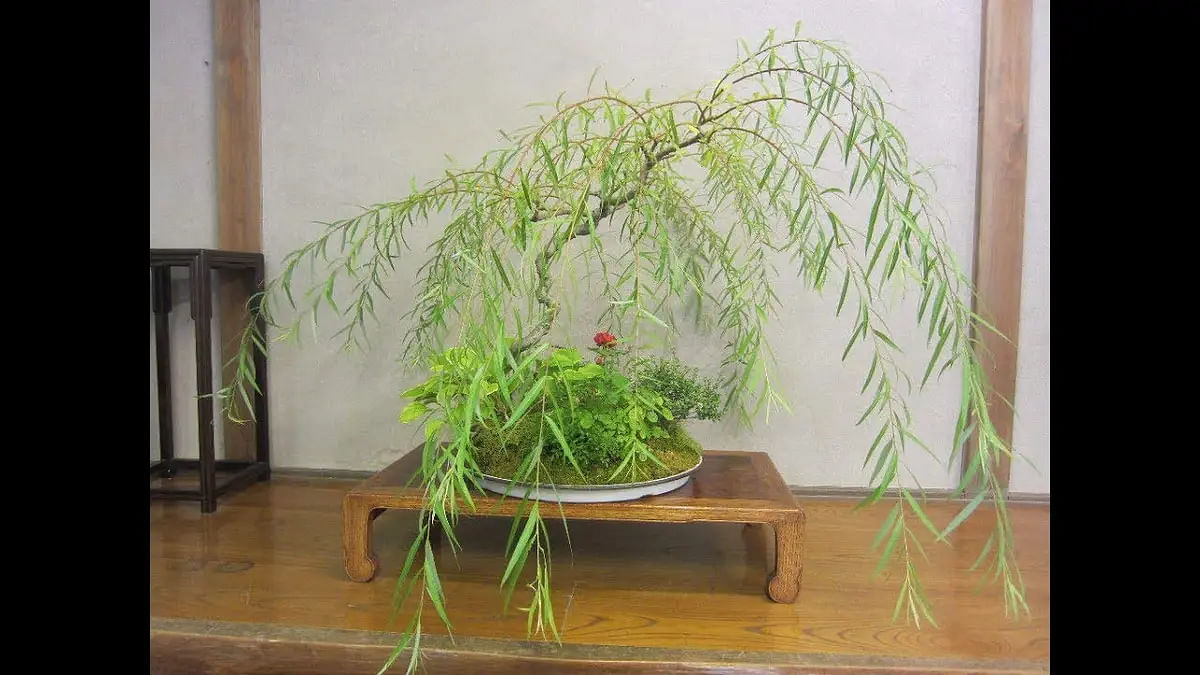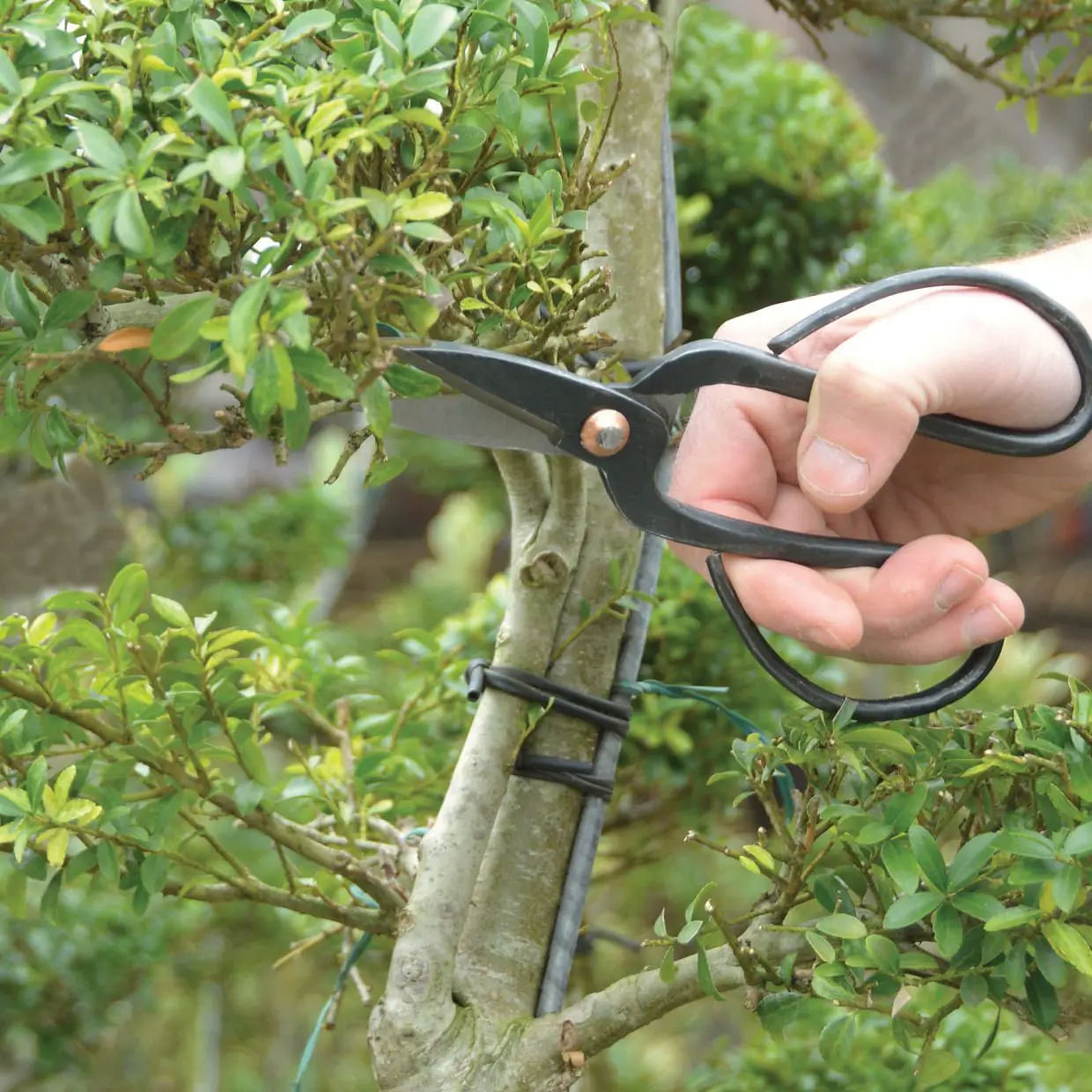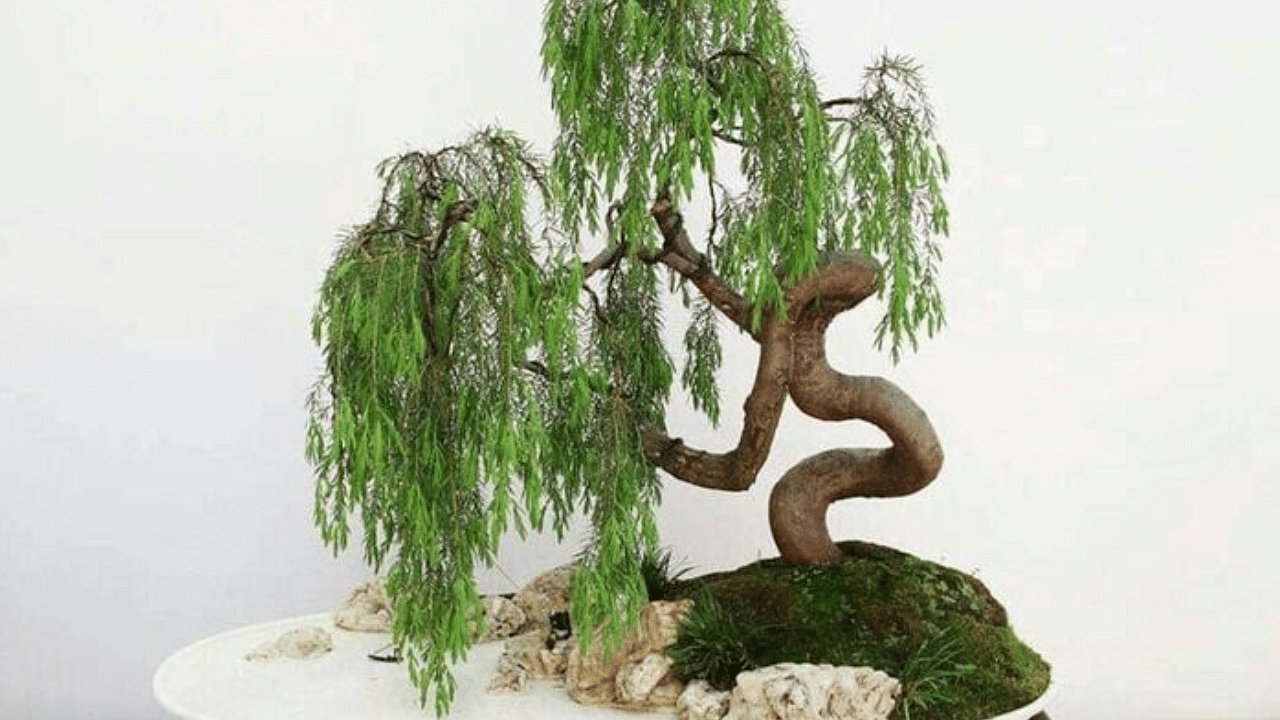Weeping Willow Bonsai: Creating a Miniature Riverside Scene

When embarking on your bonsai journey, choosing the right bonsai tree is a critical first step. For those drawn to the graceful, drooping branches of the weeping willow, creating a weeping willow bonsai can be a rewarding endeavor.

However, not all weeping willows are created equal. Before you dive in, it's important to understand the unique characteristics of different varieties. Some are more suited to the bonsai form than others. For example, the 'Golden Curls' and 'Tristis' varieties are known for their flexibility and adaptability, making them excellent choices for bonsai beginners.
When choosing the right bonsai tree, consider the tree's future environment. Weeping willows thrive in full sun and require ample water, mimicking their natural riverside habitats. If your home or garden can't provide these conditions, a weeping willow bonsai may not be the best choice.

Lastly, consider the size. While bonsai trees are, by definition, small, some weeping willow varieties can still grow quite large. Make sure you have the space to accommodate your tree as it grows and changes. You can learn more about this in our article on understanding bonsai tree size factors.
Remember, bonsai is an art form that requires patience and care. But with the right choice and proper bonsai tree maintenance, you can create a stunning, miniature riverside scene right in your own home.

After you've chosen your weeping willow, the next step is to understand the essentials of weeping willow bonsai care. Just like any other living thing, your bonsai tree needs attention and love to thrive. You can start your journey with our bonsai tree kits that make the process easier for beginners.
One of the most important bonsai tree care tips is to ensure your weeping willow gets plenty of sunlight. These trees love the sun, and they need a good six hours of it each day. Place your bonsai in a sunny spot, but be mindful of extreme heat, which can dry out the soil too quickly.

Watering is another crucial aspect of bonsai tree maintenance. Weeping willows are naturally found near water bodies, and they need a lot of moisture. Water your bonsai regularly, ensuring the soil stays moist but not waterlogged. Overwatering can lead to root rot, which can be fatal for your tree.

Pruning is an essential part of how to grow a weeping willow bonsai. Regular pruning helps maintain the tree's shape and promotes healthy growth. Use sharp, clean tools to prune your bonsai, focusing on removing dead or diseased branches first.

Lastly, don't forget about feeding your bonsai. Weeping willows are fast growers and need a balanced fertilizer to support their growth. Apply a slow-release fertilizer in the spring and fall to keep your tree healthy and vibrant. For more detailed information on bonsai care, check out our bonsai care essentials guide.

Remember, bonsai is more than just a hobby—it's a journey of understanding and connecting with nature. With the right care, your weeping willow bonsai will become a beautiful, living piece of art, creating a miniature riverside scene that brings peace and tranquility to your space.
Now that you've mastered the basics of weeping willow bonsai care, it's time to let your creativity shine. Creating a riverside scene with your weeping willow bonsai is a delightful way to bring a touch of nature's serenity into your home or garden. This miniature scenery is not just aesthetically pleasing, but it also reflects the natural habitat of the weeping willow, enhancing its beauty and authenticity. If you're interested in creating similar scenes with different types of bonsai, consider exploring options like the Chinese Elm Bonsai or the Cherry Blossom Bonsai.
Start by choosing a shallow, wide tray. This will serve as the 'riverbed' for your scene. Fill it with fine gravel or sand, which you can find at any garden center. This will mimic the look of a riverbed. If you're unsure about the type of tray to use, our guide on Choosing the Right Bonsai Pot can be helpful.

Next, place your weeping willow bonsai at one end of the tray. The weeping branches of the tree should cascade towards the 'river,' creating a picturesque scene. Remember, the placement of your bonsai tree is crucial in creating a balanced and harmonious riverside scene.

Now, it's time to create the 'river.' You can use blue glass pebbles or small stones to represent water. Arrange them in a winding path through the tray, starting from the base of your bonsai tree.

Finally, add some small plants or moss around the 'river' to represent the riverside vegetation. You can also add miniature figurines like a bench or a fisherman to bring your riverside scene to life.

Creating a bonsai riverside scene is a wonderful way to express your creativity and connect with nature. It's a testament to the beauty and versatility of bonsai, and a reflection of the care and dedication you've put into your bonsai journey. So, let your imagination run wild, and create a miniature world that brings you joy and peace. If you're looking for more inspiration, you might want to check out our articles on Bonsai Apple Trees or Ficus Bonsai Care.
After successfully creating your miniature riverside scene with a weeping willow bonsai, the next crucial step is ensuring its longevity. This is where our bonsai tree maintenance tips come into play. The beauty of your bonsai lies in its health and vitality, and these can be achieved through proper care and attention.
Maintaining your weeping willow bonsai involves a combination of proper watering, feeding, pruning, and repotting. Let's delve into these aspects one by one.
Watering: Weeping willow bonsais, like their full-sized counterparts, love water. However, avoid overwatering as it can lead to root rot. The key is to keep the soil moist, not waterlogged. Use a watering can with a long spout to reach the roots without wetting the leaves. For more detailed watering tips, you can refer to our guide on watering bonsai trees.

Feeding: Regular feeding is essential for the health of your bonsai. Use a balanced bonsai fertilizer to provide your tree with the necessary nutrients. Apply the fertilizer every two weeks during the growing season and once a month during the dormant period. For more information on feeding your bonsai, check out our article on bonsai tree nutrition.

Pruning: Pruning is an art that helps maintain the shape and size of your bonsai while promoting its health. Regularly prune your weeping willow bonsai to maintain its weeping shape and to remove any dead or diseased branches. For more insights on pruning techniques, you can read our article on pruning bonsai trees.

Repotting: Weeping willow bonsais are fast growers and may need to be repotted every two years. This ensures the roots have enough room to grow and that the soil nutrients are replenished.

Remember, bonsai tree care is a journey, not a destination. It requires patience, dedication, and a deep connection with nature. As you nurture your weeping willow bonsai, you'll find that it's not just about maintaining a miniature tree, but also about cultivating mindfulness and tranquility in your life.
Now that you've learned about choosing the right bonsai tree, understanding its care, and creating a riverside scene, let's delve into how to grow a weeping willow bonsai. This journey is not just about cultivating a miniature tree, but also about fostering a deeper connection with nature and your inner self.
Firstly, you need to acquire a weeping willow cutting or seed. You can either purchase these from a reputable bonsai nursery or collect them from a mature weeping willow tree. If you're starting from a seed, plant it in a small pot filled with bonsai soil and keep it in a warm, well-lit area. Water it regularly and wait for it to sprout.

Once your seedling or cutting has established a strong root system, it's time to start shaping your bonsai. This is where your creativity and personal touch come into play. Using bonsai wire, gently shape the branches to mimic the weeping form of a full-sized willow. Remember, the goal is to create a miniature version of nature, so strive for a natural, not forced, appearance.

As your bonsai tree grows, continue to prune and shape it, always keeping in mind the image of the mature tree you're striving to emulate. This process requires patience and dedication, but the reward is a living piece of art that reflects your personal journey and connection with nature.

Finally, don't forget to enjoy the process. Growing a weeping willow bonsai is a journey of discovery, creativity, and connection. As you nurture your tree, you're not just growing a bonsai, you're cultivating a deeper appreciation for the beauty and resilience of nature.
So, embark on this journey with an open heart and mind. With the right care and attention, your weeping willow bonsai will flourish, creating a miniature riverside scene that brings tranquility and beauty into your life.

Now, let's explore the captivating world of incorporating miniature scenery into your bonsai. This is where your bonsai tree truly comes to life, transforming from a simple plant into a breathtaking landscape. The weeping willow bonsai, with its cascading branches and lush foliage, lends itself beautifully to creating a riverside scene.
Imagine a miniature riverbank, with a weeping willow leaning over the water, its branches gently brushing the surface. This is the scene we're aiming to create. To start, you'll need a shallow tray filled with sand to represent the river. Arrange small pebbles and stones to mimic a natural riverbed.

Next, place your weeping willow bonsai at the edge of the 'river', positioning it so its branches reach towards the water. This creates the illusion of a full-sized tree on a riverbank.

Now, let's add some additional elements to enhance the scene. Consider adding miniature plants to represent undergrowth or small figurines to bring a touch of whimsy. Remember, this is your creation, so feel free to express your personal style and creativity.

Lastly, maintaining this miniature scenery is just as important as your bonsai tree maintenance. Keep the 'river' clean and free of debris, and ensure the miniature plants receive adequate light and water. With careful attention and regular care, your bonsai riverside scene will remain a vibrant and tranquil sanctuary.
Through this process, you're not just choosing the right bonsai tree and learning bonsai tree care tips. You're creating a living piece of art that reflects your connection with nature and your unique journey in the world of bonsai. So, let your creativity flow and enjoy the rewarding process of incorporating miniature scenery into your bonsai.
As we venture into the world of bonsai, it's essential to grasp some fundamental bonsai tree care tips that will help your miniature landscapes thrive. Whether you're just starting out or looking to refine your skills, these tips will guide you on your bonsai journey.
Firstly, understanding the basics of bonsai tree maintenance is crucial. Bonsai trees, like the weeping willow bonsai, require a delicate balance of sunlight, water, and nutrients to flourish.

Ensure your bonsai receives adequate sunlight, ideally 5-6 hours a day. However, avoid direct midday sun as it can scorch the leaves. Watering should be done when the topsoil feels slightly dry to the touch, but never let the soil completely dry out. Remember, overwatering is just as harmful as underwatering.
When it comes to feeding, use a balanced bonsai-specific fertilizer. This will provide the necessary nutrients for your bonsai to grow and maintain its health.

Secondly, choosing the right bonsai tree for your environment and lifestyle is key. If you're a beginner, opt for a hardy species like the weeping willow that can tolerate a range of conditions.

Finally, remember that bonsai is a form of art that requires patience and dedication. Each tree has its unique needs and characteristics. As you learn how to grow weeping willow bonsai or any other species, you'll develop a deeper connection with nature and discover the joy of creating your miniature bonsai scenery.
With these bonsai tree care tips in mind, you're well on your way to becoming a bonsai expert. Embrace the journey, and let your bonsai creations be a reflection of your love for nature and art.
Post a comment